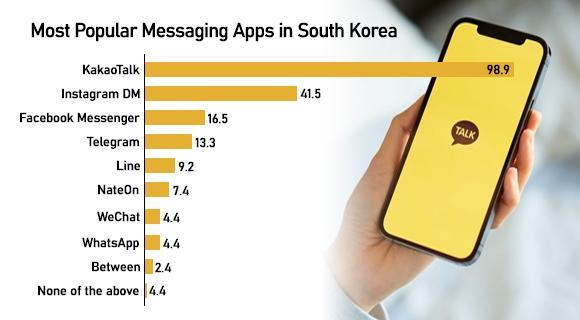
SEOUL, November 12 (AJP) - KakaoTalk, bowing to massive backlash and acknowledging the failure of its largest redesign to date, will restore its original interface by the end of the year after a clumsy attempt to introduce an Instagram-like picture feed to a platform used by virtually all South Koreans.
A KakaoTalk spokesperson told AJP on Thursday that the company is "working to restore the original layout by year-end" in response to negative "user feedback," meaning the arbitrary photo feed will be removed from the main page and offered only as an optional feature.
Asked why the feed had been placed on the main screen in the first place, the spokesperson said that "some users wanted an easier way to view friends' updates without tapping each profile," but conceded that "the redesign did not meet broader user expectations."
At a company event in September 2025, Kakao announced plans to evolve into an AI-powered "super app," integrating multiple services into a single platform. On September 23, it rolled out a sweeping update that replaced the traditional "Friends" tab with a social media–style feed, automatically displaying friends' profile updates and status messages.
The redesign, widely seen as an attempt to push KakaoTalk toward a social-media model, sparked widespread complaints from users who found the new format confusing, intrusive, and misaligned with how the app is used in everyday life — from business communication to money transfers.
Unlike WhatsApp, LINE, or WeChat, which open directly to chat lists, KakaoTalk's feed-first interface broke from global norms and alienated long-time users.

According to IGAWorks' Mobile Index, the app's average monthly usage time per user fell from 700.17 minutes in September to 677.85 minutes in October, a decline of about 22 minutes. The figure also marked a drop from the third-quarter average of 694.82 minutes.
A separate online survey of 1,000 users aged 20 to 60 by the Korea Press Foundation's Media Research Center showed that 91 percent felt "uncomfortable being exposed to less-close acquaintances." Only about 20 percent found the new format convenient for checking updates or interacting through likes and comments, while nearly 80 percent said they wanted to return to the previous version.

The company declined to specify the financial cost of the redesign and rollback, saying that "it is difficult to measure, as updates occur monthly and costs are mixed."
The episode underscores how even dominant platforms can stumble when they misread consumer needs.
Copyright ⓒ Aju Press All rights reserved.




